Question-------------------------
Followup To
Question -
Hello Chris. I am writing in regards to what appears to be a "white cotton" fungus. However, the fungus is ALL OVER the substrate and (fake) plants, not on the fish as I know it to appear. I have a 55 gallon freshwater tank, of which I've had for over a year, with NO other problems. As of this posting: NO3 = 40ppm, NO2 = 0-.5ppm, GH = 75ppm, KH = 120ppm, PH = 7.2-7.8, NH3/NH4 = 0-.25ppm. I have (1) 9" pleco, (2) - 2" pygmy plecos, (8) cuming's barbs, (2) 3" angels and (1) cherry barb. I have conducted a major tank cleaning (3/4 change), replacing all the filter material (to pump, siphon box, 4x4x9(?) filter material under "bio balls") approximately 2 weeks ago. I have recently added a vegetable base feed to supplement the plecos nutrition. I have also just returned from a five day vacation. I suspect that my sitter overfed and did not turn the tank light off, but I am no expert. What can I do to treat the fungus, as I do not have a quarantine tank? Please help. Thank you.
Answer -
Hi Patrick;
A combination of things most likely caused the problem. The fungus is feeding on excess food. The fish may have been overfed while you were gone, but since the filter media was all changed a couple of weeks ago there may have been a surge of ammonia and nitrite for a few days. That will cause the fish to stop eating so the food built up on the bottom. The levels corrected themselves so there is now no detectable amount of ammonia and nitrite and the fish are feeling better so they eat like normal. You are simply left with the decaying food. The fungus on the decay can get on the fish too so it needs to be removed as soon as possible.
You will need to do some vacuuming. Remove the decorations and simply rinse them off. Avoid removing more than 25% to 50% of the tank water at a time or the fish could be stressed even further. Do another vacuuming every day for 3 days if you need to. The idea is to gradually get it out with partial changes.
To help avoid this in the future, give your fish sitter specific instructions on the daily amounts of food. An easy method is to get a pill box that has chambers for several days. Put in the exact amount you wnat the sitter to feed. Refrigerate or freeze it in ice trays if it is a perishable type of food. Put a timer on the lights so they aren't on more than you want. Some hood light switches will not accomodate using a timer. If the switch has to be held in until the light comes on, it won't work. However, if your light switch just simply needs a click, it can be used with a timer. Timers are pretty inexpensive at hardware stores and you just plug the hood into it, then plug the timer into the wall socket. Makes it all easier for you and the sitter in the long run.
Something else that helps is to keep your old filter pads and only change them if they literally fall apart. The beneficial bacteria that consumes the ammonia and nitrites lives in there. Every time you replace them, the bacteria goes too. Rinse the old stuff out in a container of tank water. Treat it like it is alive, because it actually is. I have a 55 gallon tank with a fluval 304 canister filter. I only clean it out about 3 times a year. I rinse the pads and the beads gently to preserve the beneficial bacteria colonies. It is also important to avoid overfeeding. More food equals more waste and it just plugs up the filter.
Hope everything turns out okay........
At Your Service;
Chris Robbins
Thank you Chris;
I appreciate the speedy response. Just another quick question, if you will...coupled with the the simple water changes, are there any anti-fungal meds I can use, or are the water changes enough? Once again, thanks.
AnswerHi Patrick;
The water changes and gravel cleaning should be enough. It is best to avoid adding medicines and chemicals if you don't have to. Most antifungals turn the water greenish and/or bluish and can stain your decorations as well turn your aquarium sealant blue. It stays in the water a long time too. Pretty ugly lookin' in my opinion.
Something else that may help avoid infection to your fish is adding aquarium salt. Add one teaspoon per gallon of water. It weakens fungi and bacteria as well as thickens the fishes' slime coat to help ward off infection. Aquarium salt is perfectly safe for the kinds of fish you have. Whenever you make a water change, add back enough salt to treat only the new water. Keep the salt in there until the "creeping crud" fungus is gone.
At Your Service;
Chris Robbins

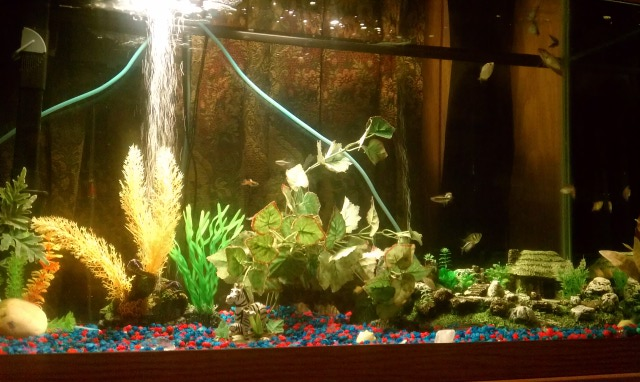 one to many fish in tank
Question
my tank
i have a 175gal freshwater tank
one to many fish in tank
Question
my tank
i have a 175gal freshwater tank
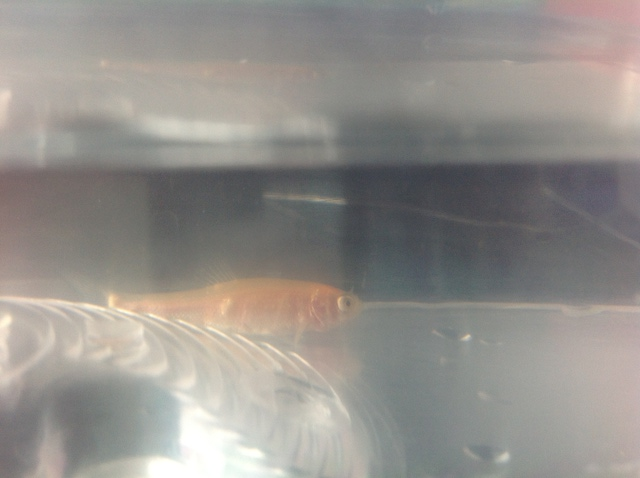 My fish has weird bumps
Question
Side view Front view
Hi there! I
My fish has weird bumps
Question
Side view Front view
Hi there! I
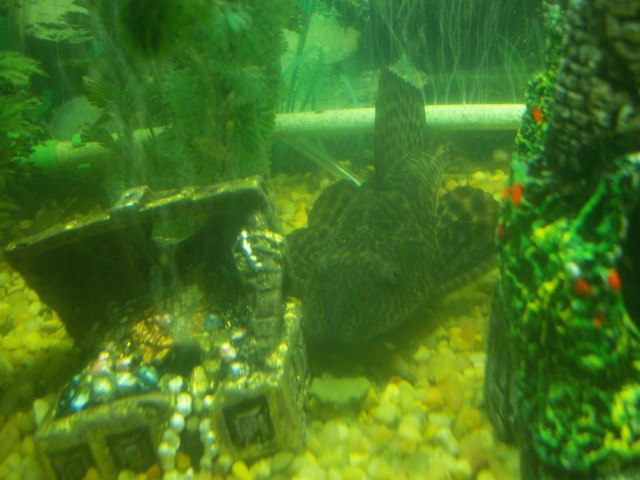 sick pleco please help
Questionsick pleco
QUESTION: Hello I have a 29ga
sick pleco please help
Questionsick pleco
QUESTION: Hello I have a 29ga
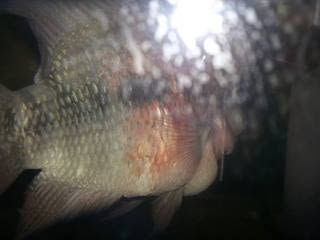 Flowerhorn
Question
Picture 1 Picture 2
My Flowerhorn
Flowerhorn
Question
Picture 1 Picture 2
My Flowerhorn
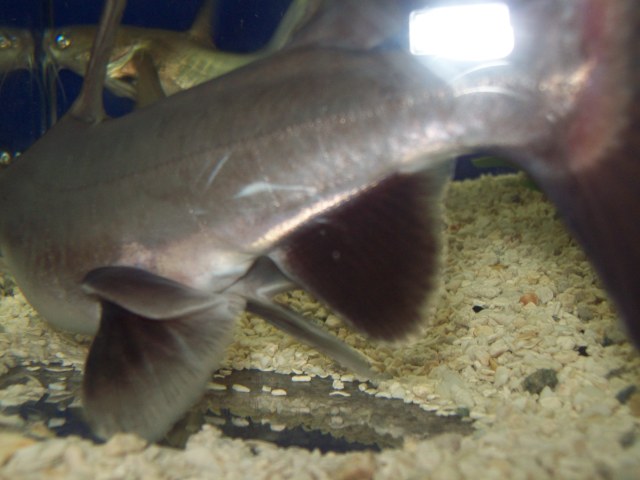 Columbian Sharks
QuestionQUESTION: I have three Columbian Sharks in my 1
Columbian Sharks
QuestionQUESTION: I have three Columbian Sharks in my 1